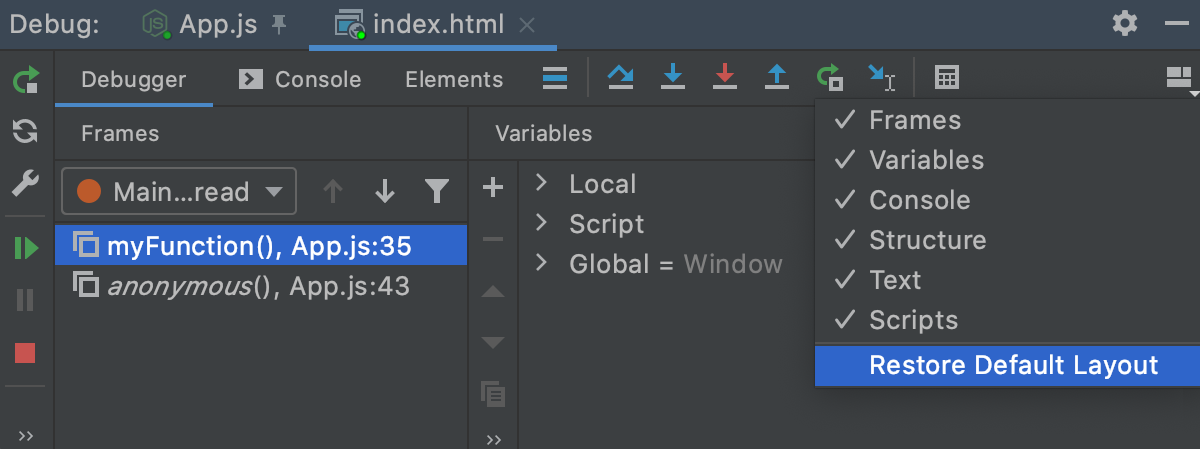Debug tool window
When you start a debugger session, WebStorm opens the Debug tool window where you can perform various debugger actions and analyze the program data (frames, threads, variables, and so on).
For a detailed description of controls, see Debug tool window.
For general instructions on using tool windows, refer to Tool windows.
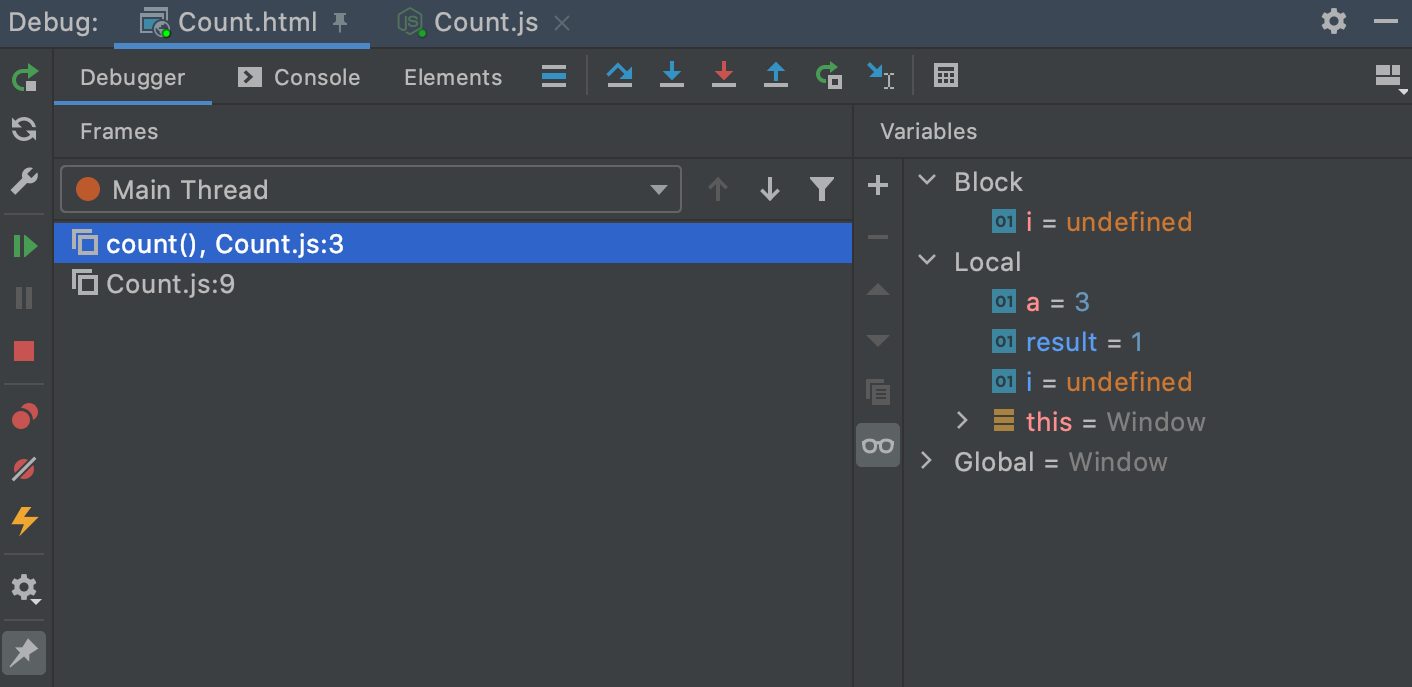
By default, the Debug tool window only appears when your program hits a breakpoint and stays after the debug session is terminated. To change this behavior, open the Settings/Preferences dialog Ctrl+Alt+S, go to , and select the Hide Debug window on process termination checkbox.
Sessions
The available debug sessions are shown in separate tabs in the top part of the Debug tool window. When you close a tab, the corresponding session terminates.

All the information like inline variable values and execution point is shown for the selected session tab. This is important if you are running several debug sessions in parallel that use the same code.
Tabs
For each session, the Debug tool window shows the following tabs and panes:
Frames: use this pane to navigate in call stacks and switch between threads when debugging a multiprocess Node.js application or Service Workers.

Variables: the pane lists the variables available in the current context and lets you analyze and modify the program state.
Watches: the pane lets you manage watches. By default, watches are shown on the Variables tab for more efficient use of the screen space. If you have a lot of watches, consider viewing them in a separate tab.
Console: displays stacktraces.
For client-side applications, the tab also shows everything that was logged in your code (for example, using
console.*) and behaves also as a read-eval-print loop (REPL) so you can run JavaScript code snippets in it and interact with the page that you are currently debugging. Learn more from Interactive debugger console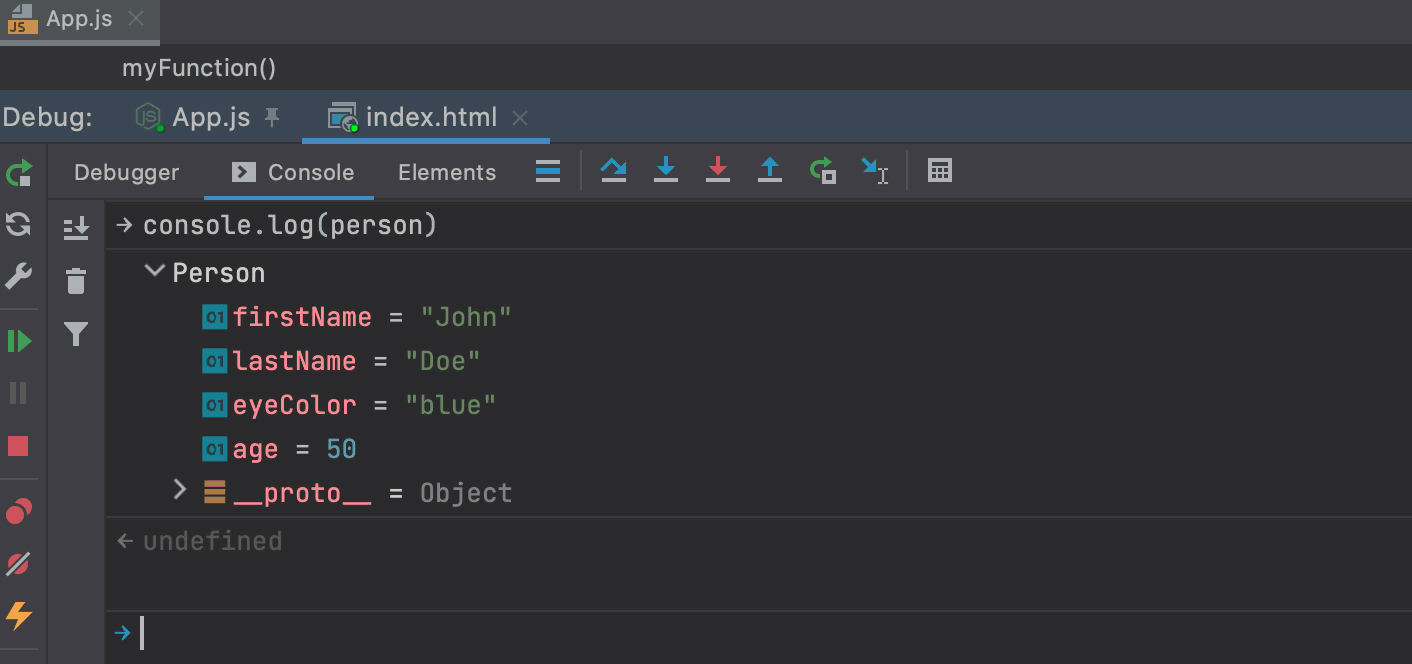
Process Console: WebStorm opens this tab when you are debugging a Node.js application. The tab shows the output of the node process itself, that is, everything that is written to process.stdout and process.stderr directly or is logged using console.*. Learn more from Using interactive Debugger Console.
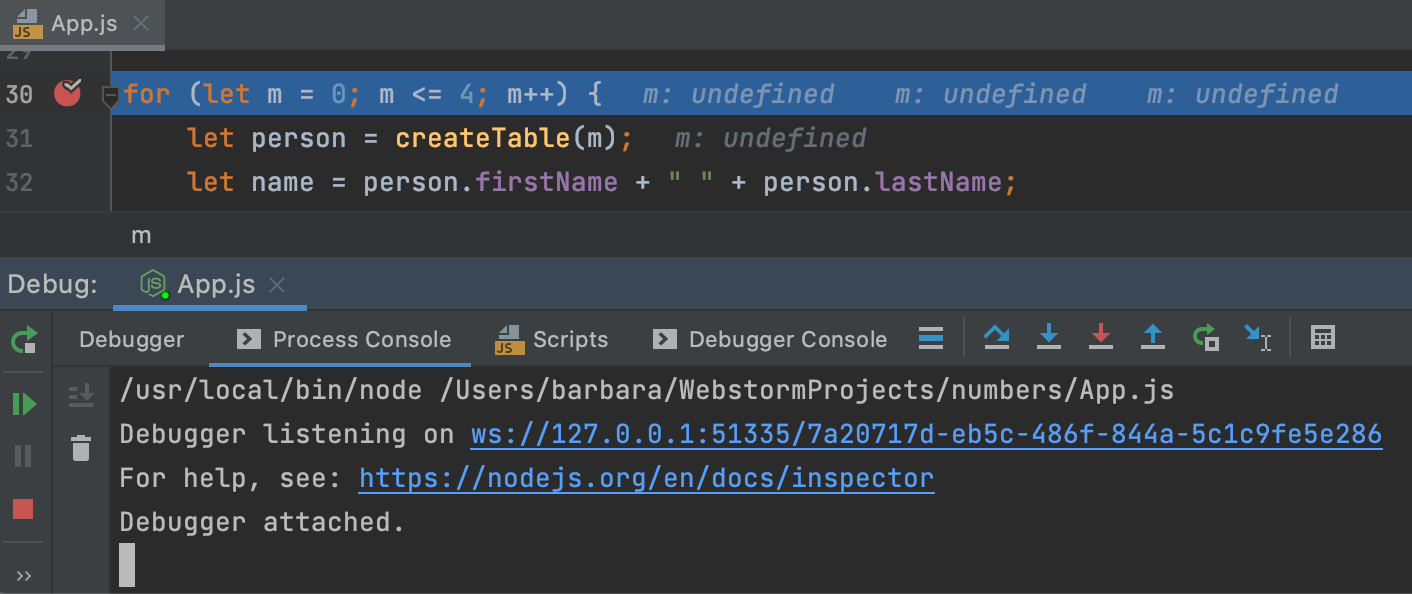
Debugger console: WebStorm opens this tab when you are debugging a Node.js application. Here you can run JavaScript code snippets and view the console.* messages.
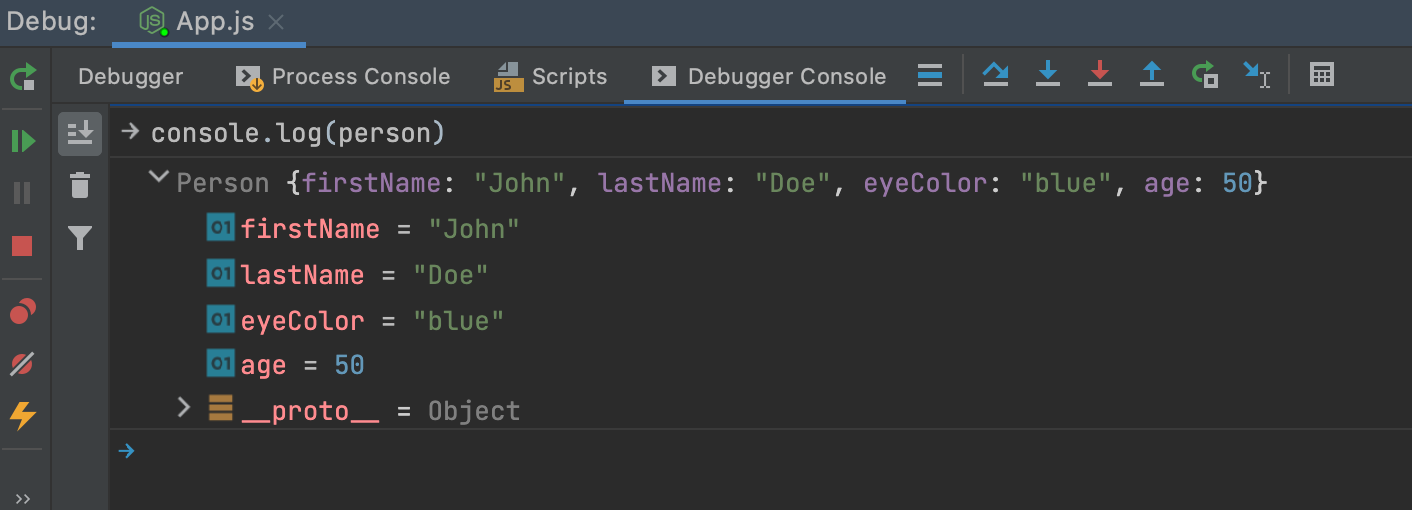
Learn more from Using interactive Debugger Console.
Scripts: during a JavaScript debugging session, the tab shows all the external resources that are automatically downloaded during the JavaScript code execution. Use this tab to monitor downloading the external resources. To open the code of a resource in the editor, double-click the item in question.
Elements: this tab shows the actual HTML source code and the HTML DOM structure of the active browser page. Use the tab to monitor the changes made to the page through the browser.
The tab is available only when you are debugging client-side code.
Show/hide tabs
Click
and select which tabs you want to see.
Move tabs
You can arrange the tabs to fit your preference. You can move a tab to another location or group a tab with another tab, so that they share the same space on the screen.
Drag the tab header to the desired location. The blue frame indicates the destination.
Restore default layout
If you changed the layout of the Debug tool window and don't like the new arrangement, you can revert it to the default state.
Click
in the top-right corner of the Debug tool window, then click Restore Default Layout.
